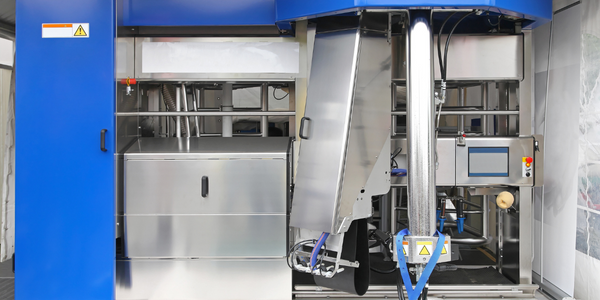Customer Company Size
Mid-size Company
Region
- Europe
Country
- Switzerland
Product
- Camunda BPM platform
Tech Stack
- Java EE
- BPMN 2.0
Implementation Scale
- Enterprise-wide Deployment
Impact Metrics
- Productivity Improvements
- Digital Expertise
Technology Category
- Platform as a Service (PaaS) - Application Development Platforms
Applicable Functions
- Business Operation
Use Cases
- Process Control & Optimization
Services
- System Integration
About The Customer
The Swiss Federal Institute of Intellectual Property (IPI) is based in Bern, Switzerland. It is the address for intellectual property (trademarks, patents and designs) in Switzerland and partly also for the corresponding international applications. It examines national applications, grants intellectual property rights and administers them. Since 2014, the IPI has used the Camunda BPM platform to run their core processes in the area of intellectual property rights management.
The Challenge
The Swiss Federal Institute of Intellectual Property (IPI) was facing challenges with their proprietary solution for the execution of business processes. Communication between the business side and IT was very difficult. The complexity and cost of process implementation was very high. The operation of the processes and the development of changes and improvements were difficult and depended on the expertise of specific persons. They have complex business processes that change frequently and generally very complex security requirements. Their compliance was difficult to monitor. In order to achieve a more business-driven development, they opted for the use of Business Process Management (BPM).
The Solution
The IPI chose Camunda BPM for its business process management needs. Camunda is the only manufacturer that truly and consistently supports BPMN 2.0 and does not propagate the “Zero Code BPM” myth. Camunda did not force the IPI to change its IT environment or technology stack, but offered a fully integrated BPM engine with optional tools. This allowed the IPI to benefit from BPM without having to adjust to specific products. They could freely decide which products and technologies they wanted to use for UI, monitoring, reporting, search etc. Additionally it offered integration with Java EE, which meant they were able to fully benefit from Java EE.
Operational Impact
Quantitative Benefit

Case Study missing?
Start adding your own!
Register with your work email and create a new case study profile for your business.
Related Case Studies.

Case Study
System 800xA at Indian Cement Plants
Chettinad Cement recognized that further efficiencies could be achieved in its cement manufacturing process. It looked to investing in comprehensive operational and control technologies to manage and derive productivity and energy efficiency gains from the assets on Line 2, their second plant in India.

Case Study
Airbus Soars with Wearable Technology
Building an Airbus aircraft involves complex manufacturing processes consisting of thousands of moving parts. Speed and accuracy are critical to business and competitive advantage. Improvements in both would have high impact on Airbus’ bottom line. Airbus wanted to help operators reduce the complexity of assembling cabin seats and decrease the time required to complete this task.

Case Study
Improving Production Line Efficiency with Ethernet Micro RTU Controller
Moxa was asked to provide a connectivity solution for one of the world's leading cosmetics companies. This multinational corporation, with retail presence in 130 countries, 23 global braches, and over 66,000 employees, sought to improve the efficiency of their production process by migrating from manual monitoring to an automatic productivity monitoring system. The production line was being monitored by ABB Real-TPI, a factory information system that offers data collection and analysis to improve plant efficiency. Due to software limitations, the customer needed an OPC server and a corresponding I/O solution to collect data from additional sensor devices for the Real-TPI system. The goal is to enable the factory information system to more thoroughly collect data from every corner of the production line. This will improve its ability to measure Overall Equipment Effectiveness (OEE) and translate into increased production efficiencies. System Requirements • Instant status updates while still consuming minimal bandwidth to relieve strain on limited factory networks • Interoperable with ABB Real-TPI • Small form factor appropriate for deployment where space is scarce • Remote software management and configuration to simplify operations

Case Study
Developing Smart Tools for the Airbus Factory
Manufacturing and assembly of aircraft, which involves tens of thousands of steps that must be followed by the operators, and a single mistake in the process could cost hundreds of thousands of dollars to fix, makes the room for error very small.









